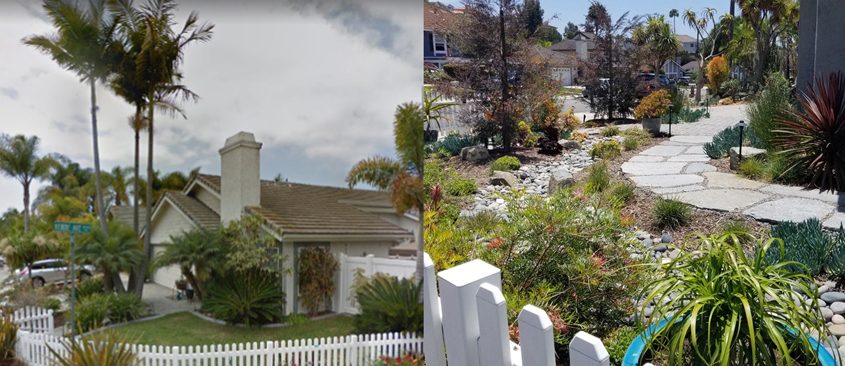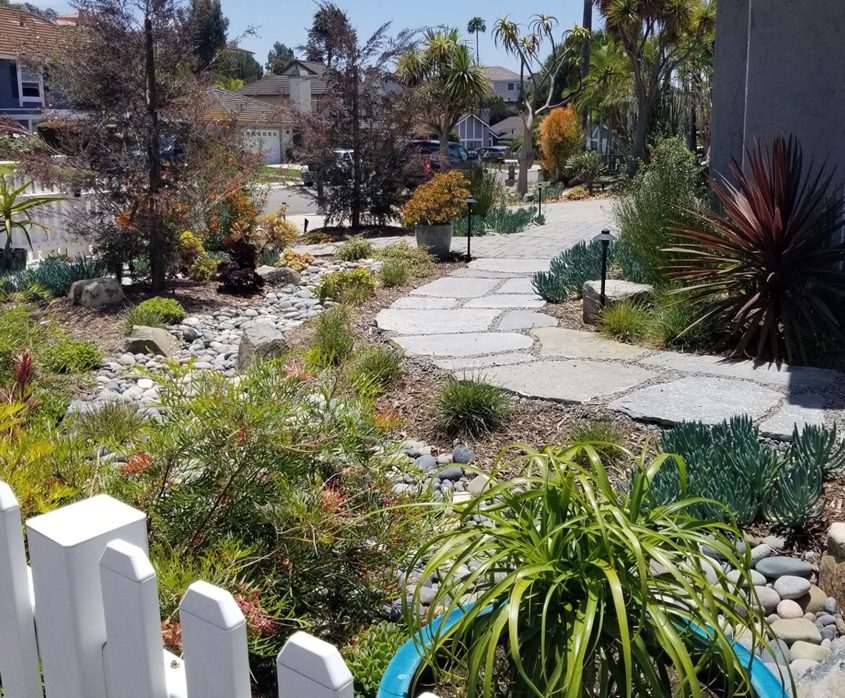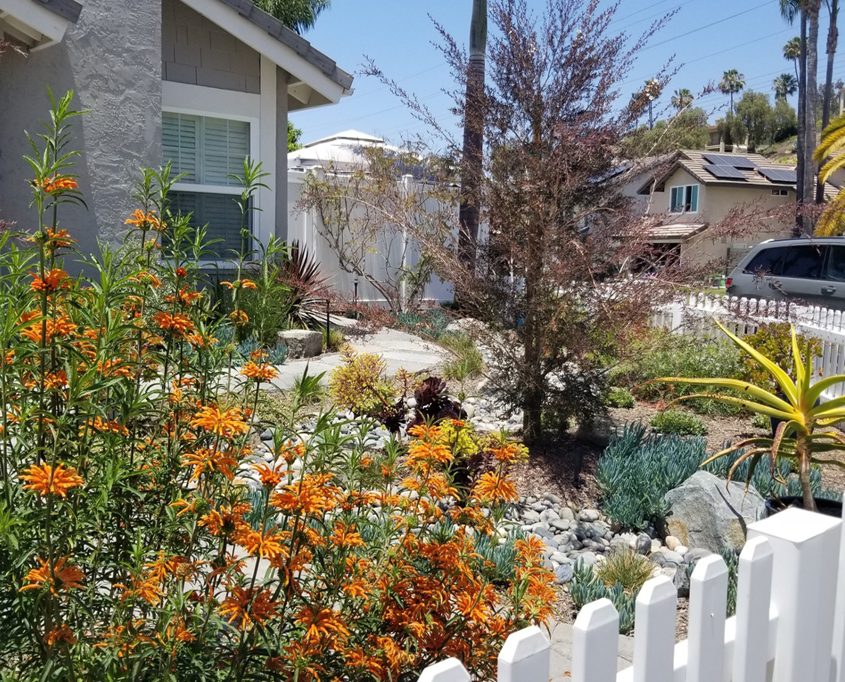Landscape Diversity Showcased By 2022 Olivenhain Municipal Water District Contest Winner
Mike and Cathy Godfrey’s water-efficient landscape design is the winner of the Olivenhain Municipal Water District’s 2022 WaterSmart Landscape Contest. The Godfreys were recognized at the June OMWD Board of Directors meeting.

Before and after view of Mike and Cathy Godfrey’s award-winning landscape design at their Encinitas home. Photo: Olivenhain Municipal Water District
“Maximizing water efficiency outdoors is especially important as drought conditions remain in effect across the state,” said OMWD Board Director Neal Meyers. “Showcasing the diversity and beauty of California-friendly landscaping can encourage others to swap their grass for climate-appropriate designs and bring awareness to the benefits of sustainable landscaping.”
Design reduces maintenance and watering needs

A dry creek bed captures and directs rainfall, minimizing water runoff into the streets that can carry pollutants down the storm drain and into the ocean. Photo: Olivenhain Municipal Water District
The Godfreys’ water-efficient landscape design at their Encinitas home displays a variety of drought-tolerant plants and succulents selected to reduce yard maintenance and watering needs. They installed a drip irrigation system that provides a low volume of water that is healthy for plants and trees while resulting in little to no evaporation.
A dry creek bed captures and directs rainfall, minimizing water runoff into the streets that can carry pollutants down the storm drain and into the ocean.

The Godfreys installed a drip irrigation system that provides a low volume of water that is healthy for plants and trees while resulting in little to no evaporation. Photo: Olivenhain Municipal Water District
The WaterSmart Landscape Contest is held annually by water agencies throughout San Diego County to highlight attractive landscapes that use less water than conventional turf-heavy landscapes. Winning entries exhibit excellence in curb appeal, design, appropriate plant selection, and water-efficient irrigation.
Find tips and resources on how to create a WaterSmart home and garden at www.watersmartsd.org/.
(Editor’s note: The Olivenhain Municipal Water District is one of the San Diego County Water Authority’s 24 member agencies that deliver water across the metropolitan San Diego region.)



